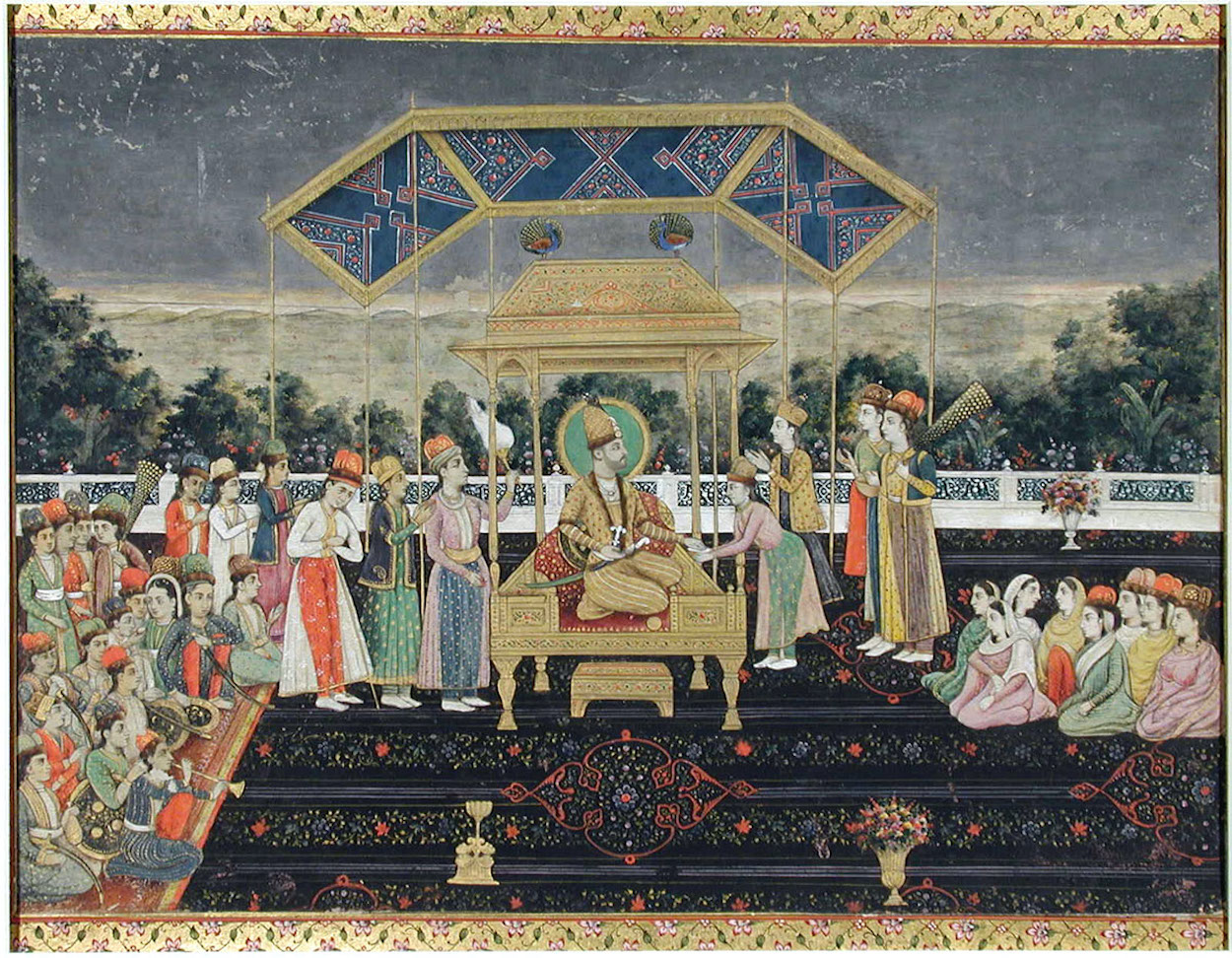Nadir Shah Afshar was a ruthless warlord of Central Turkic origin and one of the most powerful Shahs of Persia. He was known for his military prowess and has been described as the second Alexander. His devastating attack on Delhi in 1739 was a watershed movement in the Mughal era. Though the Mughal empire had already been waning before the attack, Nadir Shah's victory over the Mughals was a declaration of the decline of the once formidable descendants of Tamerlane and Genghis Khan. Nadir Shah returned to Iran with most of the imperial treasury including the enduring symbol of Mughal power—the Peacock Throne.
Over time Nadir Shah became tyrannical and ruthless. As new revolts broke out in Persia, he crushed them without mercy. He exhibited signs of mental derangement that terrified his own tribesmen and officials who thought he had become too dangerous to rule. On June 20, 1747, Nadir Shah’s commanders stormed his bed chambers to assassinate him. Though they had surprised him in his sleep, Nader Shah managed to kill two of the assassins before they succeeded in killing him. Persia descended into a state of anarchy after the death of Nadir Shah during which the palaces were plundered and the Peacock Throne was lost forever.
Interestingly, this painting was made over a century after the sack of Delhi, in the court of Bahadur Shah II, the last Mughal emperor. It is rendered in a typically Mughal style with bodies in a three-quarter view and their heads in full profile. The ornate shamiana and the clothing of all the attending women are also in a typically Mughal fashion, while the Shah is identifiable by his distinct turban. It was likely intended to serve as a reminder that even though Nadir Shah had been victorious in 1739, the Mughal empire had persisted over 100 years later. In reality, however, the Mughal treasury and their influence never recovered from the 1739 attack.
- Maya Tola
P.S. The iconic Peacock Throne or the Takht-i-taus was the greatest accumulation of precious gemstones in the 17th Century. Read more about this exquisite artifact here!


 Unknown Artist
Unknown Artist